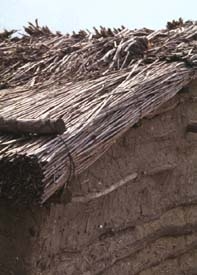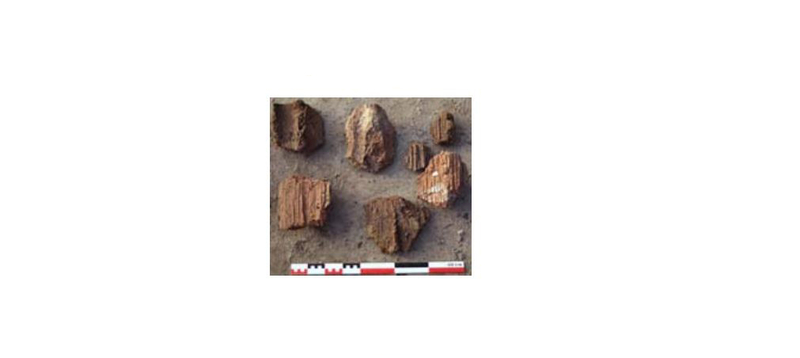- Home
- Hârsova, the chalcolithic village
- Habitation
- The materials
From the impressions left by plants found at the higher levels of remains, one can suppose that the roofs of the dwellings were covered with large reeds, a technique still practiced today.
To build the structures thus mentioned, the inhabitance of the tell made use of the resources around them. The clay sediment used for their walls and floors was taken from the banks of the river (loess or alluvium) then mixed with straw, a practice coming to the earliest agricultural civilizations.
The kinds of wood implemented in building varied according to the strength needed. Oak was obviously reserved for the weight baring posts, which required strength and flexibility.
The least noble varieties, such as poplar and willow, ash, elm and maple, were used for posts and stake reinforcements inside the walls, along with reeds called phragmites.
For the construction of the crawl space buildings, many varieties of wood were used, notably poplar and willow whose flexural strength is, however, not very large.
Perhaps this explains the recourse to split trunks and the elaborate design of the structure.
Blocks of cob from earthen walls. These baked fragments, preserve a trace of the wooden stakes and reeds, which provided internal reinforcement for the walls.

